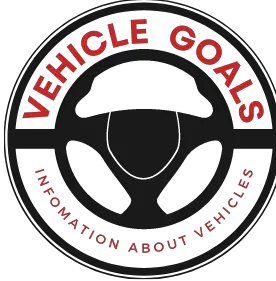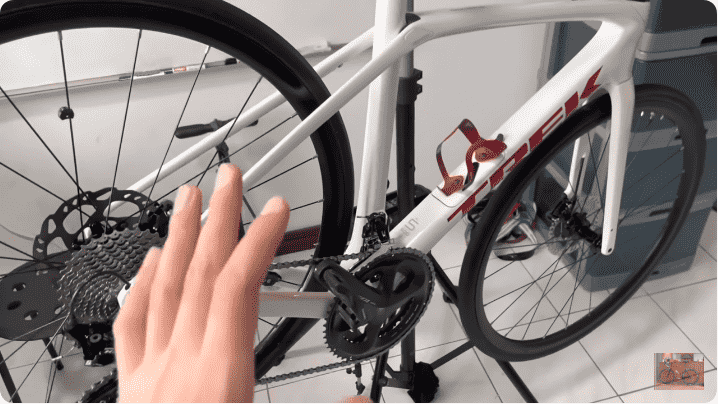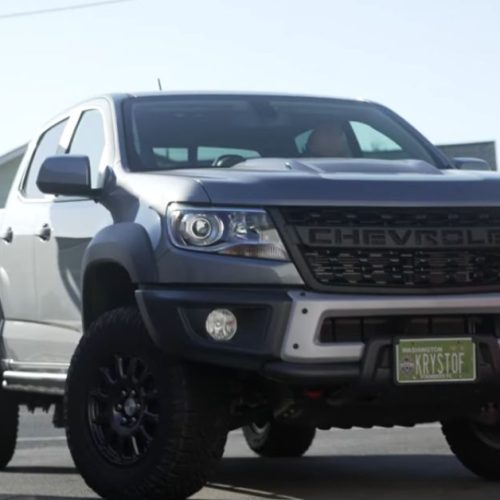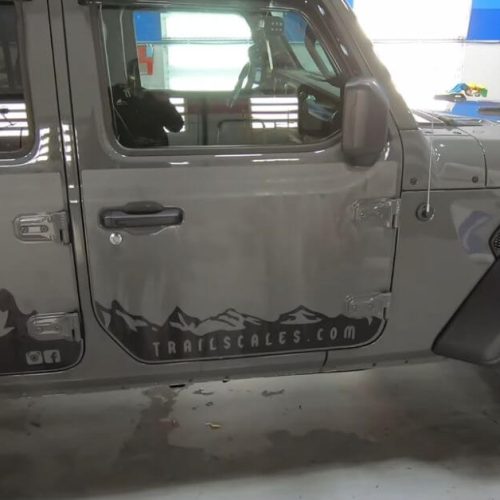A used Trek bike’s worth depends on factors such as condition, year, model, and demand. Now, let’s delve into the details of what determines the value of a used Trek bike.
When evaluating a used Trek bike, several factors come into play, including the condition of the bike, the year it was manufactured, the specific model, and the current market demand. These elements collectively influence the overall worth of a used Trek bike.
By understanding these factors and conducting thorough research, you can get a clearer picture of what a used Trek bike is worth before making any buying or selling decisions. Follow along as we explore each factor in more detail.
The Market For Used Trek Bikes
Factors That Impact A Used Trek Bike’s Value
Assessing the value of a used Trek bike can be a challenging task for buyers and sellers alike. Several factors impact the worth of a pre-owned Trek bike, and it’s important to have a clear understanding of these to make an informed decision.
One common mistake that people make when assessing the value of a used Trek bike is solely basing it on the age of the bike. While age is a factor, it is not the only determining factor.
Other important factors that contribute to a used Trek bike’s value include the overall condition of the bike, the quality of its components, its mileage or usage, and any modifications or upgrades that have been made. It’s also worth considering the current market demand for the specific model and the availability of similar bikes in the market.
By considering these factors and conducting thorough research, buyers and sellers can have a better understanding of how much a used Trek bike is worth in the current market. Remember to consult with experts, compare prices, and use online platforms to get a fair estimation of the bike’s value.
Determining The Condition Of The Bike
When determining the worth of a used Trek bike, evaluating its condition is crucial. Start by inspecting the frame and components for any signs of wear and tear. Check for cracks or dents on the frame, especially at stress points like joints and welds. Examine the paintwork; scratches and chips may indicate rough usage.
Next, focus on the components to assess their condition. Look for rust or corrosion on metal parts such as the chain, derailleurs, and brakes. Check the wheels for any loose or broken spokes. Evaluate the drivetrain, including the chain, cassette, and crankset, for signs of heavy use or excessive wear.
Considering all these factors, maintenance history, age, and the market demand for similar models can help determine the value of a used Trek bike. Remember to consider the overall condition and functionality of the bike, as factors beyond components and frame condition can affect its worth.
Researching The Model And Year
Researching the model and year of a used Trek bike is crucial to determining its value. One of the first steps is to research Trek bike models to understand their features, popularity, and market demand. This will provide insight into which models are more sought-after and therefore may have a higher resale value. Additionally, considering the different model years is essential, as newer models tend to retain their value better than older ones, although this may vary depending on the specific model. Evaluating the condition of the bike, its mileage, upgrades, and any wear and tear is also important when determining its worth. By conducting comprehensive research on bike models and considering the various model years, you can better gauge the value of a used Trek bike.
Assessing The Bike’s Maintenance History
Assessing the maintenance history of a used Trek bike is crucial when determining its worth. Maintenance records play an important role in understanding how well the bike has been taken care of by its previous owner(s). These records provide valuable insights into the servicing, repairs, and replacements performed on the bike over time.
Signs of neglect or poor maintenance can indicate potential issues or hidden problems that may affect the value and performance of the used bike. Without proper care, components may wear out faster, leading to more frequent repairs or replacements. Common signs of neglect include rust, excessive wear on the drivetrain, loose or damaged parts, and irregular servicing intervals.
By thoroughly inspecting the maintenance records and looking for signs of neglect or poor maintenance, you can make a more informed decision about the value of a used Trek bike. Remember that a well-maintained bike is likely to offer better performance and durability, which can significantly impact its worth.
Examining The Bike’s Upgrades And Modifications
When determining the value of a used Trek bike, it’s important to examine the upgrades and modifications that have been made. These can have a significant impact on the overall worth of the bike. Upgrades such as a carbon frame, high-end components, or a lighter wheelset can increase its value. On the other hand, modifications that are more personalized or subjective, such as a custom paint job or saddle, may have less impact on the bike’s value.
Another factor to consider is the presence of aftermarket parts. While some aftermarket parts can increase the value of a used bike, such as high-quality brakes or a suspension fork, others may have a minimal impact. It’s important to assess the overall condition and functionality of these parts to determine their effect on the bike’s worth.
Gauging Local Demand And Comparable Sales
When determining the value of a used Trek bike, it’s important to gauge local demand and consider comparable sales. One effective way to research pricing trends is to use online marketplaces. These platforms allow you to explore listings for similar bikes in your area, giving you an idea of what others are asking for. Analyzing pricing trends can help you determine the average price range that buyers in your area are willing to pay for a used Trek bike.
Considering The Bike’s Original Purchase Price
The worth of a used Trek bike is influenced by several factors, with the original purchase price being a key consideration. As a general rule, the higher the initial cost of the bike, the higher its resale value is likely to be. High-end Trek models with advanced features and materials often retain more value over time compared to entry-level models.
Depreciation factors also play a vital role in determining the worth of a used bike. These factors include the age of the bike, its overall condition, mileage, and any upgrades or modifications made. Bikes that are well-maintained, have low mileage and have minimal wear and tear tend to retain more value, as they are perceived as being in better condition.
It is also worth noting that market demand and the popularity of specific models can impact their resale value. Bikes that are in high demand or have a cult following may retain their value better than less sought-after models. Additionally, factors such as the local market conditions, the time of year, and the availability of comparable used bikes can influence the final price of a used Trek bike.
Getting A Professional Appraisal
When it comes to determining the value of a used Trek bike, getting a professional appraisal is highly recommended. This ensures that you have an accurate and reliable estimate of how much your bike is worth in the current market. There are several benefits of seeking a professional opinion:
- A professional appraiser has in-depth knowledge and expertise in bike valuation, considering factors such as the model, year, condition, and any aftermarket upgrades or accessories.
- They can provide an unbiased assessment, considering market trends and demand for used Trek bikes.
- Having a professional appraisal can help you negotiate a fair price if you decide to sell your bike.
- It can also be useful when dealing with insurance claims and providing documentation for replacement value.
Finding an appraiser for used bikes is relatively straightforward. You can start by contacting local bike shops, bicycle appraisers, or even bike enthusiasts who may know this area. Look for professionals who have experience and a solid reputation. Be sure to provide them with all relevant information about your Trek bike to ensure an accurate appraisal.
Setting A Realistic Asking Price
Setting a realistic asking price for a used Trek bike is crucial if you want to attract potential buyers. Balancing the price and value of your bike is important to ensure a fair and reasonable offer. Here are some tips for negotiating the sale price:
- Research: Start by researching the current market value of similar used Trek bikes. This will give you an idea of what other sellers are asking for.
- Condition Assessment: Assess the condition of your bike and be honest about any wear and tear or necessary repairs. Consider how this affects the value.
- Additional Features: Highlight any additional features or upgrades your bike may have, as these can increase its value.
- Consider Age and Mileage: Take into account the age and mileage of your bike. Generally, newer bikes with lower mileage will command higher prices.
- Pricing Strategy: Set a price that is slightly higher than what you are willing to accept, as buyers often negotiate. However, be prepared to justify your asking price.
- Be Flexible: If you’re not getting much interest at your initial price, be open to adjusting it to attract more potential buyers.
By following these tips, you can set a realistic asking price for your used Trek bike and negotiate a fair sale price that satisfies both you and the buyer.
Selling Options For Used Trek Bikes
Where to Sell Your Bike
If you are looking to sell your used Trek bike, there are several options available to you. Each option has its pros and cons, so it’s important to weigh them carefully before making a decision.
| Channel | Pros | Cons |
|---|---|---|
| E-commerce Platforms | Wide reach, potential for higher prices, easy-to-list | High competition, shipping logistics, and seller fees |
| Local Bike Shops | Convenience, fast sale, trade-in options | Limited audience, lower prices offered |
| Classified Ads | Potential for local buyers, direct interaction | Time-consuming, limited exposure |
| Social Media | Wide reach and potential for local connections | Time-consuming negotiation challenges |
| Online Bicycle Marketplaces | Dedicated audience, specialized platform | Shipping logistics, seller fees |
Consider the pros and cons of each selling channel carefully to determine the best option for your used Trek bike. E-commerce platforms offer a wide reach and the potential for higher prices, but they also come with high competition and seller fees. Local bike shops provide convenience and fast sales, but you may receive lower prices compared to other options. Classified ads and social media can attract local buyers, but they require more time and effort. Online bicycle marketplaces have a dedicated audience but involve shipping logistics and seller fees. Choose the option that aligns best with your priorities and preferences.
Finalizing The Sale And Ensuring A Fair Transaction
Tips for a Smooth Transaction Process
No one wants a bumpy sale when it comes to used bikes. Follow these tips to ensure a smooth, fair transaction for both yourself and the buyer:
| Tips for a Smooth Transaction Process | Explanation |
|---|---|
| 1. Be Honest About the Bike’s Condition | Transparently describe any wear and tear, maintenance history, or modifications made to the bike. |
| 2. Set a Reasonable Price | Consider the bike’s age, condition, and market value to determine a fair asking price. |
| 3. Use Secure Payment and Delivery Methods | Opt for secure payment options like PayPal or bank transfers, and choose a reliable delivery service to protect both parties. |
| 4. Put Everything in Writing | Create a written agreement that includes details about the bike, the sale price, and any warranties or guarantees provided. |
| 5. Meet in a Safe Location | Arrange the meeting in a public place, like a park or coffee shop, for personal safety. |
Safeguard yourself and the buyer by following these tips for a smooth transaction. By being honest, setting a reasonable price, using secure payment methods, documenting everything, and meeting in safe locations, you can ensure a fair sale and a satisfied buyer.
Frequently Asked Questions Of How Much Is A Used Trek Bike Worth
How Do I Find Out How Much My Bike Is Worth?
To find out your bike’s worth, research online marketplaces, forums, and bike valuation websites. Consider factors like the brand, model, condition, age, and any modifications. Compare listings of similar bikes to gauge their prices.
Why Trek Wants To Sell You A Used Bike?
Trek sells used bikes to offer affordable options for customers. They aim to give riders access to quality bikes at a lower price point. By selling used bikes, Trek enables more people to experience the joy of cycling without breaking the bank.
How Can I Tell How Old My Trek Bike Is?
To determine the age of your Trek bike, you can check the serial number located on the frame. The first letter represents the year of manufacture, starting with ‘A’ for 1976. Contact Trek customer service for assistance if needed.
How Much Should I Spend On A Used Bike?
Spend carefully on a used bike, considering factors like brand, condition, and features. Research the market for average prices and set a budget accordingly. Compare listings to find a good deal, but prioritize quality and safety over price alone.
How Much Does A Used Trek Bike Cost?
The price of a used Trek bike can vary depending on its model, age, condition, and demand in the market.
Conclusion
To summarize, determining the worth of a used Trek bike can be a complex task. Factors such as age, condition, model, and market demand all come into play. By considering these aspects and conducting thorough research, you can get a better estimate of its value.
Whether you’re buying or selling, having this knowledge will help you make informed decisions and ensure a fair transaction. Don’t hesitate to consult experts or use online platforms for assistance.





